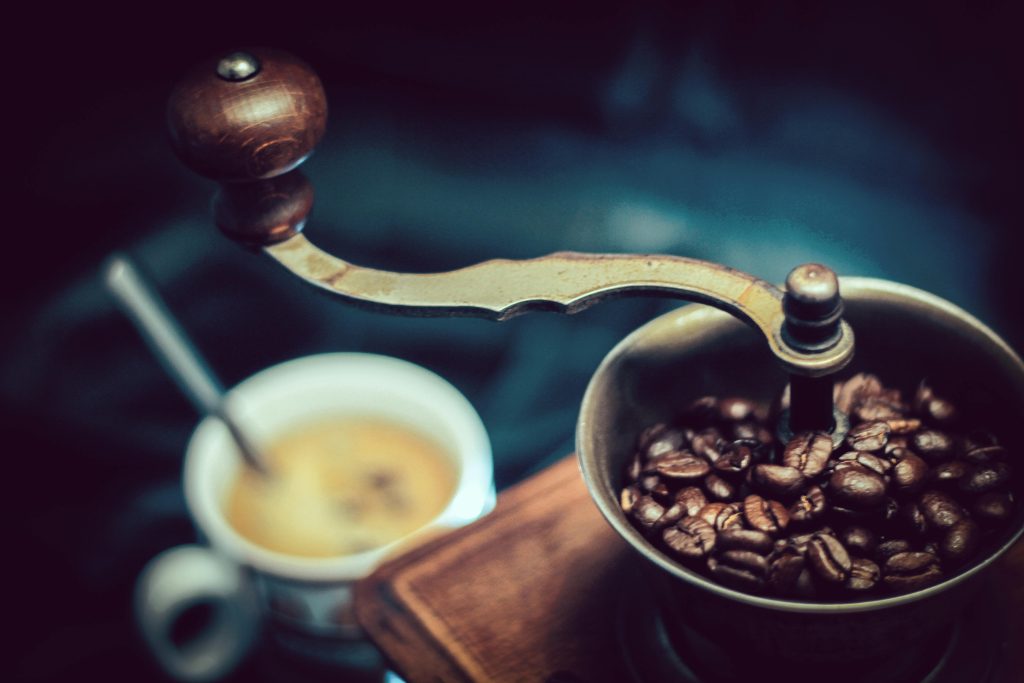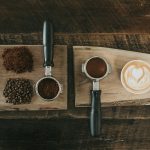Table of Contents
Do you want to know why your home-brewed coffee never tastes quite like the cup from your local café? I asked 12 champion baristas to spill their secrets, and what they shared will completely change your morning coffee game. The science behind a perfect cup isn’t complicated – it’s just carefully guarded by industry insiders who prefer keeping customers dependent on their expertise.
The Morning Ritual You’re Doing Wrong
The biggest mistake happens before you even touch your coffee maker. That morning rush to get caffeine in your system? It’s sabotaging your brew. Top baristas start their prep the night before, but not in the way you might think. Instead of grinding beans ahead of time (a major no-no), they prepare their workspace, clean their equipment, and measure their water. This simple 2-minute evening routine saves precious morning minutes and guarantees a better cup. The science behind this is simple: coffee oils are incredibly sticky and even microscopic residue from yesterday’s brew can add unwanted bitterness to today’s cup. Plus, a clean machine runs at optimal temperature, ensuring proper extraction every time.
The Water Secret That Changes Everything

Here’s the shocker: Fancy coffee beans matter far less than your water choice. “I’ve made amazing coffee with grocery store beans and terrible coffee with $50 specialty beans – the difference was always the water,” says Sarah Chen, three-time US Barista Champion. Skip the bottled water and instead use filtered tap water that’s been left out overnight. The chlorine evaporates, leaving you with perfect coffee water that won’t mess with the flavor. The chemistry is fascinating: coffee is 98% water, and mineral content dramatically affects extraction. Too many minerals (hard water) over-extract and create bitterness, while too few (distilled water) result in sour, flat coffee. The sweet spot? Water with 150ppm total dissolved solids – coincidentally, what you get with most carbon filters.
The Temperature Trick Nobody Talks About

Forget exact temperature measurements. The pros use a simple trick: bring water to a boil, then wait exactly 45 seconds before brewing. This works whether you’re using a fancy pour-over setup or a basic drip machine. For cold morning starts, pre-heat your mug with hot water while you wait – it keeps your coffee at the perfect temperature twice as long. The reason? Coffee’s flavor compounds extract differently at different temperatures. Too hot (above 205°F) and you’ll burn the coffee, releasing harsh bitter compounds. Too cool (below 195°F) and you’ll under-extract, missing the sweet and complex flavors that make coffee delicious. The 45-second rule consistently lands you in the 198-202°F range – perfect for extracting maximum flavor without bitterness.
Storage Myths Busted
Those fancy airtight containers? Most baristas don’t use them. Instead, they opt for the original bag the beans came in, with one crucial modification: they squeeze out all the air and use a simple binder clip to seal it. “Expensive coffee containers are basically expensive ways to trap stale air with your beans,” explains Marcus Rodriguez, head roaster at Blue Bottle Coffee. Here’s why: coffee beans release carbon dioxide for days after roasting, creating a protective barrier against oxidation. Airtight containers trap this beneficial gas along with oxygen, which gradually degrades the coffee. The original bag’s one-way valve lets CO2 escape while keeping oxygen out. Plus, dark storage is crucial – UV light breaks down coffee’s aromatic compounds faster than oxygen.
Equipment Secrets You Never Knew

The pros’ secret weapon isn’t their expensive equipment – it’s how they maintain it. Professional machines are often older than their trendy consumer counterparts, but they perform better because of rigorous maintenance. The reason? Coffee oils go rancid within hours and mineral buildup changes water chemistry gradually. Here’s their maintenance routine that takes just 2 minutes:
- Rinse everything immediately after use (prevents oil buildup)
- Wipe grinder burrs with a dry brush weekly (ensures consistent particle size)
- Run white vinegar through your machine monthly (dissolves mineral deposits)
- Clean your water reservoir weekly (prevents bacterial growth)
- Use filtered water in your kettle to prevent mineral buildup (maintains optimal mineral content)
- Clean the shower head monthly (ensures even water distribution)
The Ratio Revolution
Forget the standard coffee-to-water ratios you’ve been taught. Different beans need different ratios because of varying bean density, roast level, and processing methods. Light roasts are denser and need more water, while dark roasts extract more easily. The pros use this simple test: start with 1:16 (one part coffee to 16 parts water), make a cup, wait 3 minutes for it to cool slightly, then taste. Too strong? Add water. Too weak? Tomorrow, use more coffee. Your perfect ratio depends on your taste, not someone else’s rules. The key is understanding that extraction isn’t just about strength – it’s about balance. A properly extracted cup shouldn’t be bitter or sour, regardless of how strong or weak you prefer it.
Morning Timing Hacks

Professional baristas have their morning routine down to an art. Here’s their timeline for perfect coffee in under 5 minutes:
- Start heating water (0:00)
- Rinse filter and warm mug (0:30)
- Grind beans (1:00)
- First pour (1:45)
- Final pour (2:30)
- Clean up while coffee drips (3:30)
- Perfect cup ready (4:30)
The Tasting Secret
Want to actually taste those fancy flavor notes? Wait 3-4 minutes after pouring before your first sip. “Hot coffee masks complexity,” says James Kent, roasting champion. “Those blueberry notes in Ethiopian beans? They only show up once the coffee cools a bit.”
Budget-Friendly Pro Tips
Not everyone can afford $20/lb coffee beans. These pro tricks make cheaper beans taste expensive:
- Buy whole beans from the grocery store’s bulk section
- Check roast dates – newer is always better
- Store in a cool, dark place (not the fridge)
- Grind just before brewing
- Use filtered water
- Clean your equipment religiously
Common Mistakes Even Coffee Lovers Make
Even dedicated coffee fans make these crucial errors:
- Using too-hot water (ruins the flavor)
- Storing beans in the freezer (unless vacuum sealed)
- Eyeballing measurements (consistency is key)
- Using old beans (anything over 6 weeks is past prime)
- Neglecting grinder maintenance
- Using unfiltered water
- Skipping the bloom phase
Expert Flavor-Enhancing Tips
Want to elevate your coffee without spending more? Try these barista-approved tricks:
- Add a tiny pinch of salt to reduce bitterness
- Warm your mug before brewing
- Use two paper filters for a cleaner taste
- Stir the bloom gently
- Let the coffee rest for 30 seconds after brewing
- Clean your grinder between different beans
- Match water temperature to roast level
Making Your Next Cup Matter
Take these pro secrets and start with just one tomorrow morning. Focus on the water quality first – it’s the easiest change with the biggest impact. Remember, great coffee isn’t about having the most expensive equipment or the fanciest beans – it’s about paying attention to the small details that make a big difference.

I’m Audrey, a dedicated mother of teenagers with an insatiable love for coffee. On BeanBrewLove.com, I intertwine my need for caffeine with reflections on life. Whether expressing a nostalgic sentiment or injecting a hint of sarcasm, my blog is a reservoir of coffee culture, brewing techniques, and global coffee reviews.




